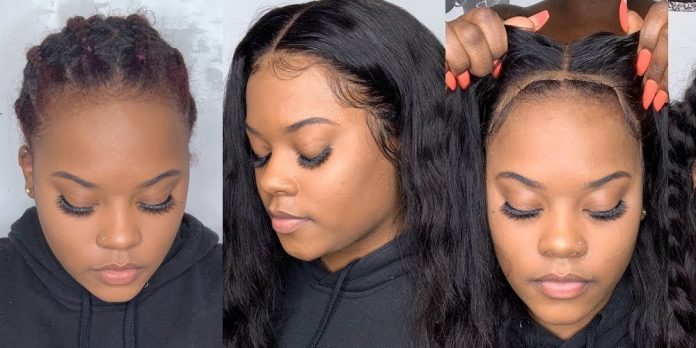After finding a perfect lace wig, you are left with the choice of installation. Lace front wigs are sewed-in, glued, or both; both installation methods achieve the same results regardless of the type of lace front wigs. Sew-in and glue techniques are very different in price and procedures; they have pros and cons. This article explores the difference between sewed-in or glued front lace wigs and which the experts recommend.
Sewed-In Lace Front Wigs
This technique requires skilled professionals to install, and the procedure may require more time to complete compared to glueing. Sewing is also more expensive but also more durable and reliable; the installation process involves braiding the natural hair according to the hairstyle you want. The lace wig is then weaved to the braid lines using a needle and a thread. The color of the thread should blend with the color of the wig to avoid visibility.
Sewed-in lace wigs are capable of lasting up to two months with the proper maintenance. This technique applies to all wig types and textures. It can be used to sew a 13×4 size lace wig; the lines should be braided from the forehead to the back to ensure the hair on the hairline edges is tucked in. Ensure the thread is not visible; they should be sewn in places where you would not part.
Glued Lace Front Wigs
The procedure for glueing lace wigs involves applying the hair glue on the hair extension and then attaching it directly to your hair or the wig cap. This technique is so easy that you can do it yourself just by referring to tutorials. The glue used in this procedure is a special one; it should be adhesive and strictly made for hair. The advantage of glueing is that the hair glue used is very affordable, which means that even the best quality glue can be easily attained. Moreover, the hair glue is usually waterproof
Glueing is very simple, and it gives a more natural look; it is recommended for those who want to cover their hairline completely. Removing a glued lace wig requires a lot of care and patience, ensuring that the natural hair is not damaged. However, there are glue removal products that should be used to avoid hair damage. Glueing is not as durable as sewing; a glued wig can go for up to two weeks.
Glueing doesn’t involve any complexity; you only have to attach the hair weft properly. It is not limited to any styling, and it achieves a more natural look.
Conclusion
Both sewing and glueing a lace wig achieves the best result; if you wish to achieve a more natural look, glueing is the best option. If you are more focused on durability, then go for the sewing option. Lace tape is another installation method; it is the simplest and the shortest procedure, it can take just an hour or less to install. Regardless of the type of installation, longetivity is most important. It is also essential to check if you are not allergic to the glue used. You can check if the hair glue reacts negatively to your skin by testing it on your skin.










